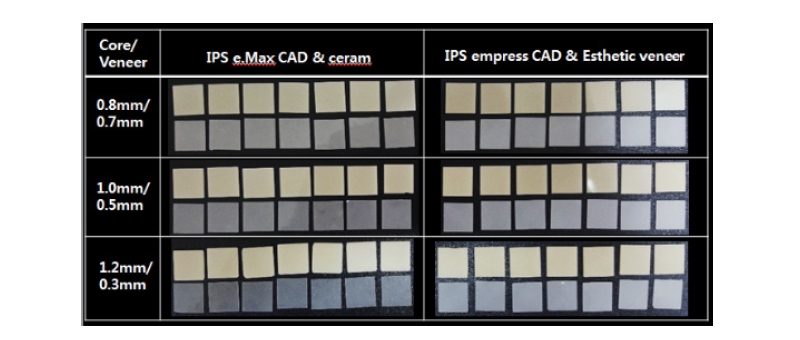Abstract
Objectives: The purpose of this study was to evaluation the effect of translucency on CAD/CAM ceramic according to different core/veneer thicknesses. Methods: A total of 42 samples from 2 groups of 7 ceramic cores, each with 3 thickness values (0.8, 1.0, 1.2 mm) were manufactured. The veneers were also manufactured in 3 thicknesses (0.3, 0.5, 0.7 mm). The group names were based on the name of the ceramic core (IPS e.Max CAD; LD, and IPS Empress CAD; LR). The associated number was determined by the combined thickness of the core and veneer: 1 = (0.8 + 0.7); 2 = (1.0 + 0.5); 3 = (1.2 + 0.3). The translucency was measured using a spectrophotometer and defined via the contrast ratio (CR) and translucency parameter (TP). Two-way ANOVA was performed to compare the 2 groups (material and thickness). Results: As the core thickness increased, the TP value also increased, and the CR value (for LR group) decreased. The results of 2-way ANOVA demonstrated that the thicknesses of different core/veneer combinations significantly affected the translucency (p<0.05). Conclusions: The different core and veneer thicknesses affected the translucency of CAD/CAM ceramic.
Figures & Tables

Fig. 1. The different core/veneer thickness


